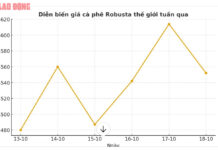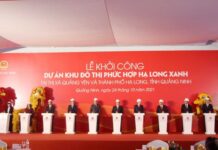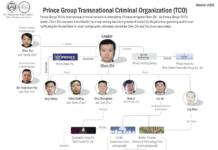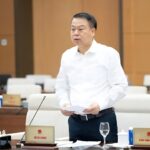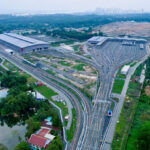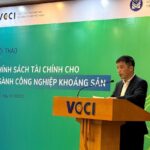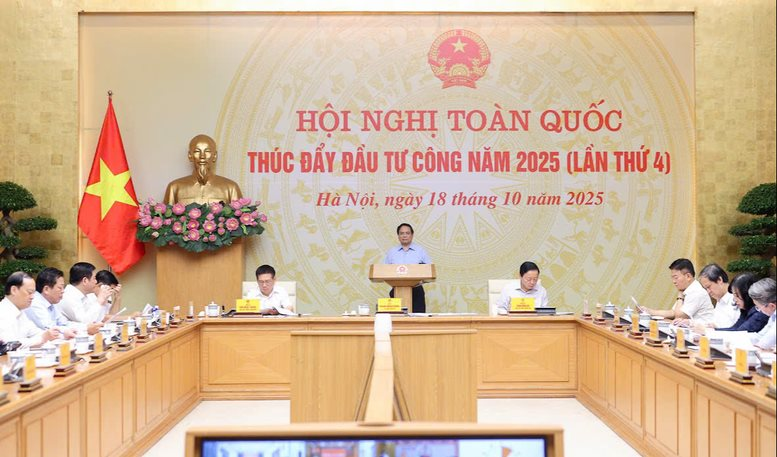
On the morning of October 18th, Prime Minister Pham Minh Chinh chaired the 4th National Conference on Accelerating Public Investment in 2025. The conference was held online.
According to the Ministry of Finance’s report, as of October 16th, 2025, the total disbursed public investment capital reached 454,946.6 billion VND, an increase of over 14,500 billion VND compared to the report on September 30th, 2025. However, the disbursement rate still falls short of expectations, with 29 ministries, central agencies, and 18 localities having disbursement rates below the national average.
Conversely, there are bright spots such as Ha Tinh, Ninh Binh, and Hai Phong, which have achieved or exceeded their assigned disbursement plans. These provinces not only successfully fulfilled their tasks but also introduced effective leadership models, implementation strategies, and monitoring mechanisms worth replicating.
Ha Tinh
As one of the localities with a disbursement rate exceeding 100%, Ha Tinh has demonstrated remarkable efficiency in administration, mobilizing the political system, and flexibly addressing arising issues. As of October 15th, Ha Tinh had disbursed over 5,500 billion VND, surpassing the capital plan assigned by the Prime Minister and higher than the same period in 2024.
According to the provincial leadership, recognizing this as a top political task, the province included disbursement content in weekly leadership meetings. Three working groups led by Vice Chairs of the Provincial People’s Committee were established to regularly urge and resolve difficulties for each project.
The province also mobilized the entire political system for land clearance and ensuring the supply of construction materials, especially for key inter-regional projects like high-speed railways. Additionally, the province required project management boards and investors to commit to monthly and quarterly disbursement schedules, holding them accountable to the Provincial People’s Committee. Ha Tinh proactively adjusted public investment management plans in the context of transitioning to a two-tier local government model, ensuring uninterrupted project management.
Ninh Binh
With a disbursement rate of nearly 94% out of the total allocated capital of over 28,500 billion VND, Ninh Binh remains a highlight in the 2025 public investment landscape.
According to Chairman of the Provincial People’s Committee Pham Quang Ngoc, from the beginning of the year, Ninh Binh established a provincial-level steering committee, led by the Secretary of the Provincial Party Committee and the Chairman of the Provincial People’s Committee, to ensure unified leadership from preparation to disbursement. Centralized management was implemented during the transition to the two-tier government model, with all projects previously under district management transferred to the provincial management board to avoid disruptions.
Notably, the province applied a capital allocation principle where well-performing units received funds quickly, while delayed units had their funds reallocated to projects with better disbursement potential.
Focusing on closely managing the progress of each project, direct responsibility was assigned to the leadership of the Provincial People’s Committee and Directors of management boards, who were held accountable for progress before the collective leadership and relevant agencies.
Regarding specific results, Chairman Pham Quang Ngoc stated: To date, land clearance for the expressway project passing through the province has reached approximately 80%; PPP projects through Ninh Binh (former Nam Dinh) have achieved over 85% land clearance progress, expected to be completed in October. For the North-South high-speed railway project, 34 resettlement sites have been identified, with 2 areas already under construction and the remaining 29 being expedited for completion.
Hai Phong
Assigned over 3,000 projects, including 1,658 projects delegated by the Prime Minister, Hai Phong achieved a disbursement rate of 67% with a total disbursed capital of 23,982 billion VND as of September 30th, 2025.
According to the city’s leadership, seven key lessons were drawn to achieve this disbursement result.
First, proactively and decisively adhere to the Prime Minister’s directives and guidelines from the Ministry of Finance and central ministries. Second, develop growth scenarios and set weekly and monthly disbursement schedules for each project. Shorten internal procedures and promote swift inter-agency coordination to strive for 100% capital plan disbursement as assigned by the Prime Minister.
Third, enhance the quality of design consulting to minimize appraisal time and avoid unnecessary project adjustments. Reduce fire prevention approval time by 70% and design dossier appraisal time by at least 50%. Fourth, address land clearance as a critical bottleneck by establishing specialized working groups to handle issues on-site.
Fifth, reallocate capital plans from delayed projects to those with better disbursement potential. Require investors to work closely with contractors, revise plans, and implement solutions to compensate for delays in subsequent months, accelerating overall progress. Sixth, apply information technology in public investment management by deploying software to track disbursement progress, serving as a basis for rewarding and disciplining units.
Seventh, strengthen the role of leaders. Hai Phong recognizes that public investment disbursement heavily depends on the responsibility and determination of leaders. The city assigned specific tasks to each leader and established a transparent, rigorous progress monitoring mechanism.
For future plans, Hai Phong’s leadership stated that the city will further reduce administrative procedure approval time for construction investment by 50%; focus on clearing land for key projects, especially the Lao Cai – Hanoi – Hai Phong railway line; review the 2021-2025 medium-term public investment plan, reasonably reallocate capital between projects; and strictly handle leaders and individuals causing delays in assigned tasks.
In summary, public investment disbursement is a key driver of economic growth and a measure of the effectiveness of local government administration. With this in mind, the remaining months of 2025 require localities to continue with greater determination, coordination, and flexibility.
Vietnamese Processed Fruits and Vegetables Take Center Stage
The global shift towards healthy eating is revolutionizing consumer behavior worldwide, unlocking significant opportunities for Vietnam’s processed fruit and vegetable industry.
Prime Minister: Every Completed Project Brings Joy and Happiness to the People
Every home that rises and every project that reaches completion brings joy, excitement, and happiness to the people, contributing to the nation’s development. This was the powerful message emphasized by the Prime Minister, highlighting the profound impact of progress on the well-being and prosperity of the community.
Why FDI Waves Reversed, Costing Northern Vietnam’s Largest Industrial Hub Its Crown
After four months of provincial mergers, Vietnam’s economic landscape is beginning to reveal a fresh palette of opportunities. The consolidation and expansion of development spaces have not only facilitated infrastructure connectivity and resource sharing among localities but have also rapidly amplified the ripple effect in attracting foreign direct investment (FDI).
Vietnam’s Mining Sector Burdened by Higher Taxes, Fees Than US, Australia, Raising Business Concerns
Mining enterprises in Vietnam currently face a staggering nine different types of taxes. According to tax experts, the country’s mining sector bears a total tax and fee burden of approximately 25% of revenue, significantly surpassing the 5-10% average seen in countries like Australia, the United States, and Malaysia.



